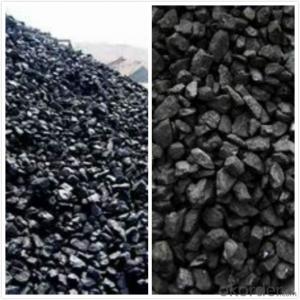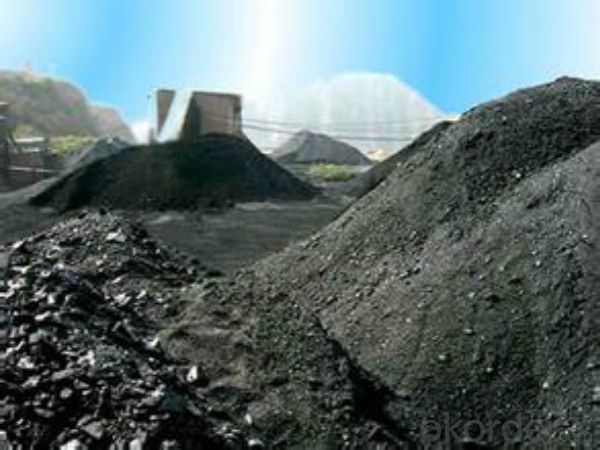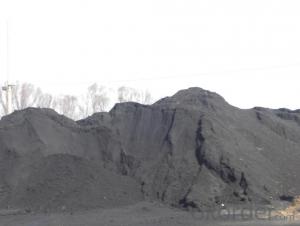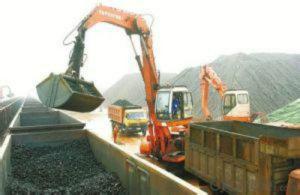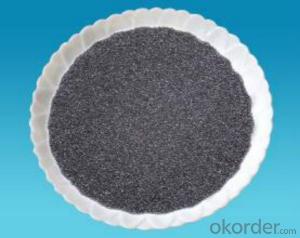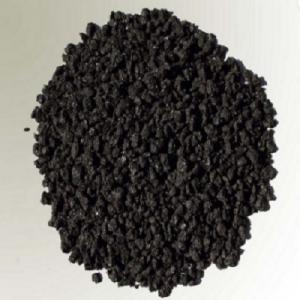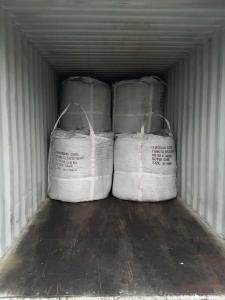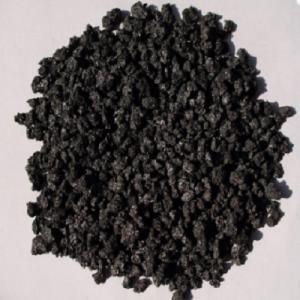High FC Low A low S Met Coke Made in China
- Loading Port:
- Qingdao
- Payment Terms:
- TT OR LC
- Min Order Qty:
- 1500 m.t.
- Supply Capability:
- 20000 m.t./month
OKorder Service Pledge
OKorder Financial Service
You Might Also Like
Description
Met Coke is a carbon material resulting from the manufactured purification of multifarious blends of bituminous coal. its medium-grade composite contains a high occurrence of unstable components. We can provide products in our general specifications or as customers' requirement. We are willing to cooperate sincerely with friends from all over the world and develop together prosperously. We follow the operation philosophy of contract-abiding, trustworthy, first-rate service and to achieve mutual benefits, and win-win situation. We have established an extensive cooperation relationships with circles of international trade, industry, science and technology, and financial, which established a bridge to connect China and Internation market.
Features
It is widely used in casting and metallurgy Smelting every tons Irons need about 0.4 to 0.6ton coke. As the reducing agent in the steel-making and foundry industry. It is playing more and more crucial role in the steel industry.
Specification
Item No. | Ash (%) max | S (%) max | F.C. (%) min | V.M (%) max | Moisture (%) max | P (%) max | CSR (%) min | CRI (%) max | Cal.Value (≥Kcal/Kg) |
NF-M001 | 9 | 0.6 | 89.5 | 1.2 | 5 | 0.035 | 65 | 25 | 7250 |
NF-M002 | 10.5 | 0.6 | 88 | 1.2 | 5 | 0.035 | 65 | 25 | 7100 |
NF-M003 | 12 | 0.6 | 86.5 | 1.5 | 5 | 0.035 | 63 | 28 | 6900 |
NF-M004 | 13 | 0.6 | 85.5 | 1.5 | 5 | 0.035 | 60 | 30 | 6800 |
Pictures
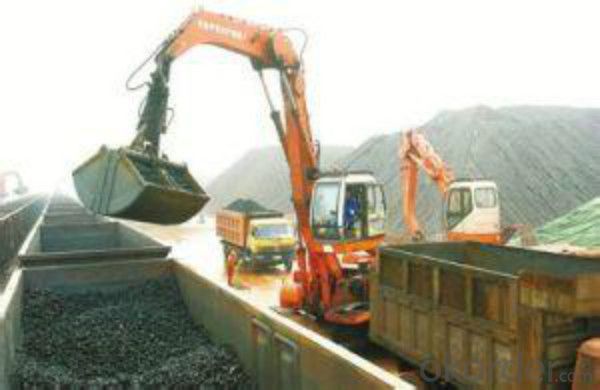
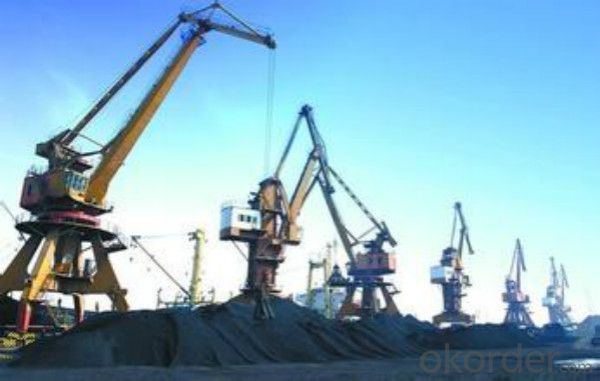
FAQ
1 What is the packing?
Packaging Details: | 1. jumbo ton bag |
2 Payment terms?
D/P, L/C,T/T with advanced payment
- Q: Process for producing carbon fiber board
- What is the production process of carbon fiber?For the production process of carbon fiber, when the PAN based carbon fiber is produced, the polyacrylonitrile fiber, which is called the parent fiber, is firstly prepared by polymerization and spinning process. These are then placed in an oxidizing furnace and oxidized at 200 to 300 degrees celsius. In addition, carbon fibers are also carbonized in the carbonization furnace at temperatures between 1000 and 2000 degrees celsius. In addition to the conventional type of fine carbon fiber, the PAN based carbon fiber also includes coarse fiber, known as the "tow man type carbon fiber", which costs less to produce the crude fiber.If you can not understand that there are other carbon fiber net professional look, introduce a carbon fiber network via Wuxi to see you, the above information and pictures very much, I often go to their website to learn.
- Q: How does carbon affect the taste of food and beverages?
- Carbon can affect the taste of food and beverages by either enhancing or altering their flavor profiles. In the case of carbonated beverages, the added carbon dioxide creates a bubbly sensation, which can give a refreshing and lively mouthfeel. Carbonation also enhances the perception of acidity and can balance the sweetness in some drinks. On the other hand, when carbon-based compounds, such as those found in charred or grilled food, come into contact with heat, they can create smoky or burnt flavors that add depth and complexity to certain dishes. Overall, carbon plays a significant role in influencing the taste and sensory experience of various food and beverage products.
- Q: What are the effects of carbon emissions on the stability of wetlands?
- Carbon emissions have significant effects on the stability of wetlands. One of the main consequences is the alteration of the hydrological cycle, which can disrupt the delicate balance of water levels in wetland ecosystems. Increased carbon emissions contribute to climate change and global warming, leading to higher temperatures and altered precipitation patterns. These changes can result in more frequent and intense droughts, floods, and storms, which can negatively impact the stability of wetlands. Elevated carbon dioxide levels also affect the vegetation in wetlands. Excess carbon dioxide can stimulate the growth of certain plant species, leading to an imbalance in the wetland ecosystem. This can result in the dominance of invasive species, which outcompete native plants and disrupt the natural biodiversity of the wetland. In turn, this can impact the stability of the wetland as it relies on a diverse range of plant species to support the intricate web of life within it. Furthermore, carbon emissions contribute to the acidification of water bodies, including wetlands. Increased carbon dioxide dissolves in water, forming carbonic acid, which lowers the pH of the water. Acidic conditions can be detrimental to the survival of many wetland species, including plants, amphibians, fish, and invertebrates. The acidification of water can also lead to the leaching of toxic metals and other pollutants from surrounding soils, further compromising the stability and health of wetland ecosystems. Lastly, carbon emissions contribute to the rise of sea levels due to the melting of polar ice caps and thermal expansion of ocean waters. This poses a significant threat to coastal wetlands, which are particularly vulnerable to sea-level rise. As sea levels increase, saltwater intrusion can occur, leading to the degradation and loss of freshwater wetlands. This can result in the displacement or extinction of numerous plant and animal species that rely on these ecosystems, ultimately destabilizing the wetland. In conclusion, carbon emissions have profound effects on the stability of wetlands. From altering the hydrological cycle and vegetation composition to causing acidification and sea-level rise, these emissions pose a significant threat to the health and integrity of wetland ecosystems. It is crucial to mitigate carbon emissions and take measures to protect and restore wetlands to ensure their stability and preserve the invaluable services they provide.
- Q: What is carbon offsetting in the travel industry?
- Carbon offsetting in the travel industry refers to the practice of compensating for the carbon emissions produced during travel activities by investing in projects that reduce or remove an equivalent amount of greenhouse gases from the atmosphere. As travel contributes significantly to global carbon emissions, carbon offsetting has emerged as a way for individuals and businesses to take responsibility for their environmental impact and strive towards more sustainable practices. When individuals or companies choose to offset their travel emissions, they calculate the carbon footprint of their trip based on factors like distance traveled, mode of transport, and fuel consumption. This calculation helps determine the amount of carbon dioxide equivalent emitted during the journey. To offset these emissions, they then invest in projects that reduce or remove the same amount of greenhouse gases from the atmosphere, such as renewable energy projects, reforestation efforts, or energy efficiency initiatives. The concept of carbon offsetting aims to achieve carbon neutrality, where the emissions produced are balanced by an equivalent reduction or removal of emissions elsewhere. By investing in offset projects, travelers and travel companies can effectively mitigate their environmental impact and contribute to overall efforts in combating climate change. Carbon offsetting in the travel industry not only helps reduce the carbon footprint of individual trips but also encourages the development of sustainable practices within the tourism sector. It provides travelers with the opportunity to minimize their environmental impact by supporting projects that promote renewable energy, conserve biodiversity, or improve local communities' livelihoods. However, it is essential to ensure that carbon offset projects are credible and deliver genuine emission reductions. Verified standards and certifications, such as the Gold Standard or Verified Carbon Standard, help ensure the integrity and transparency of offset projects. It is also important to prioritize efforts in reducing emissions directly, such as using more fuel-efficient transportation or opting for low-carbon alternatives, before relying solely on offsetting. In conclusion, carbon offsetting in the travel industry allows individuals and businesses to take responsibility for their carbon emissions by investing in projects that reduce or remove greenhouse gases. It is a proactive approach towards minimizing the environmental impact of travel and promoting sustainable practices within the tourism sector.
- Q: What are the environmental impacts of carbon emissions from industries?
- The environmental consequences resulting from industries' carbon emissions are significant and extensive. To begin with, carbon emissions contribute to the greenhouse effect, resulting in global warming and climate change. The excessive release of carbon dioxide and other greenhouse gases into the atmosphere traps heat, leading to a rise in the Earth's temperature. Consequently, polar ice caps melt, sea levels increase, and extreme weather events like hurricanes and droughts occur. These alterations disrupt ecosystems, cause biodiversity loss, and jeopardize the survival of various species. Furthermore, carbon emissions contribute to air pollution. Industries release not only carbon dioxide but also harmful pollutants like sulfur dioxide, nitrogen oxides, and particulate matter. These pollutants have adverse effects on human health, causing respiratory and cardiovascular problems, and even premature death. Additionally, they contribute to the creation of smog and acid rain, causing further harm to ecosystems and endangering plant and animal life. Moreover, carbon emissions from industries negatively impact water systems. When carbon dioxide dissolves in water, it forms carbonic acid, resulting in a decrease in pH levels and increased acidity. This acidification harms marine life, especially organisms with calcium carbonate shells or skeletons, such as coral reefs, shellfish, and plankton. The disruption of marine ecosystems can have a ripple effect on other species and disturb the food chain. Lastly, carbon emissions contribute to deforestation and habitat destruction. Industries often rely on fossil fuels for energy, leading to the clearing of forests to make way for mining or drilling operations. This destruction of natural habitats not only reduces biodiversity but also releases stored carbon from trees into the atmosphere, exacerbating the carbon emissions problem. To address these environmental impacts, industries must prioritize the reduction of carbon emissions. This can be achieved by adopting cleaner and more sustainable energy sources, implementing energy-efficient technologies, and enforcing stricter regulations and policies. Transitioning to renewable energy, improving industrial processes, and investing in carbon capture and storage technologies are vital steps toward mitigating the environmental consequences of industries' carbon emissions.
- Q: How does carbon impact the prevalence of cyclones?
- The prevalence of cyclones is significantly affected by carbon emissions and the subsequent increase in atmospheric carbon dioxide levels. Cyclones, which are also referred to as hurricanes or typhoons, are powerful and destructive weather phenomena that originate over warm ocean waters. The alteration of climate patterns and global warming caused by the increased carbon in the atmosphere, primarily resulting from human activities like burning fossil fuels, play a major role in this. The provision of necessary fuel for cyclones to form and intensify is made possible by the warmer ocean temperatures caused by carbon emissions. As heat is trapped in the atmosphere by carbon dioxide, the surface of the oceans warms up, creating a favorable environment for cyclone development. The availability of more energy for cyclones to grow and become more destructive is directly proportional to the warmth of the ocean waters. Furthermore, carbon emissions contribute to the alteration of climate patterns, leading to changes in atmospheric circulation patterns. These changes have the potential to influence the frequency, intensity, and track of cyclones. Although it is challenging to attribute individual cyclones to carbon emissions, scientific studies indicate that the overall increase in carbon dioxide levels is contributing to a greater number of severe cyclones in specific regions. In addition, the impact of cyclones can be exacerbated by rising sea levels associated with global warming and carbon emissions. Higher sea levels result in an increased storm surge, which is the abnormal rise in water level during a cyclone. This storm surge can cause devastating flooding in coastal areas, resulting in significant infrastructure damage and loss of life. To conclude, the prevalence of cyclones is profoundly affected by carbon emissions. The increased atmospheric carbon dioxide levels result in warmer ocean temperatures, creating a more favorable environment for cyclone formation and intensification. Changes in climate patterns caused by carbon emissions also impact the frequency and track of cyclones. Furthermore, the rising sea levels associated with global warming can worsen the impact of cyclones through increased storm surge. It is crucial for society to address carbon emissions and work towards sustainable solutions in order to mitigate the impacts of cyclones and other severe weather events.
- Q: What is carbon pricing?
- The concept of carbon pricing involves assigning a monetary value to carbon dioxide and other greenhouse gas emissions in order to decrease their release into the atmosphere. This is achieved by placing a price on the carbon content of fossil fuels and other activities that produce greenhouse gases. The main goal of carbon pricing is to motivate businesses, industries, and individuals to reduce their carbon emissions by making cleaner and more sustainable practices economically favorable. There are two primary approaches to carbon pricing: carbon taxes and cap-and-trade systems. A carbon tax establishes a fixed price per ton of carbon emissions, which businesses and industries must pay based on their emission levels. This tax acts as a financial incentive for companies to decrease their emissions in order to avoid higher costs. Conversely, cap-and-trade systems set a limit, or cap, on the total amount of emissions allowed within a specific time frame. Companies are then given a certain number of emissions permits, which they can buy, sell, or trade with other companies. This system creates an emissions market, where companies that can easily reduce their emissions can sell their excess permits to those struggling to meet their targets. The revenue generated from carbon pricing can be utilized in various ways. It can be reinvested into renewable energy projects, initiatives for energy efficiency, or research and development of clean technologies. Additionally, it can be used to support vulnerable communities affected by the transition to a low-carbon economy or to mitigate the economic impacts on industries that may face challenges in reducing their emissions. Carbon pricing is regarded as an effective tool for addressing climate change, as it provides a clear economic signal to businesses and individuals to decrease their carbon footprint. By placing a price on carbon, it internalizes the costs associated with climate change and encourages the adoption of cleaner alternatives. Furthermore, it helps level the playing field between polluting industries and those investing in low-carbon technologies, creating an incentive for innovation and the advancement of sustainable practices.
- Q: Which carbon content is larger, steel or pig iron?
- Iron and steel is distinguished by carbon: carbon content below 2.11% for carbon steel, according to can be divided into carbon steel low carbon steel (WC = 0.25%), carbon steel (WC0.25% - 0.6%) and high carbon steel (WC>0.6%);
- Q: The difference between double offset paper and carbon free printing paper
- In general, we use office A4, A3, B5 and other specifications of office paper are better offset paper, excellent offset paper to UPM and APP for the domestic leader.55G-140G grams in general, some mills also produce high grams, generally belongs to industrial paper!Carbon free copy is just typing paper and coating. Paint is divided into two kinds, one kind of colored, one kind of colorless.Generally for 37G, 45G, 52G and other grams.
- Q: What are the different types of carbon-based concrete additives?
- There are several different types of carbon-based concrete additives that can enhance the performance and properties of concrete. These additives are primarily derived from carbon-based materials and can be categorized into three main types: carbon nanotubes, graphene, and carbon fibers. 1. Carbon Nanotubes: These are cylindrical structures made up of carbon atoms arranged in a unique hexagonal pattern. Carbon nanotubes have exceptional mechanical and electrical properties, making them highly desirable as concrete additives. When added to concrete, they can improve its strength, durability, and toughness. Carbon nanotubes also enhance the electrical conductivity of concrete, which is beneficial for applications such as self-healing concrete and anti-static flooring. 2. Graphene: Graphene is a single layer of carbon atoms arranged in a two-dimensional lattice. It is known for its exceptional strength, high electrical conductivity, and excellent barrier properties. When incorporated into concrete, graphene can significantly improve its mechanical properties, such as compressive strength, flexural strength, and abrasion resistance. It also enhances the durability and impermeability of concrete, providing resistance against water and chemical ingress. 3. Carbon Fibers: These are long, thin strands of carbon, typically derived from organic polymers such as polyacrylonitrile or pitch. Carbon fibers possess excellent tensile strength and are widely used as reinforcements in various construction materials, including concrete. When added to concrete, carbon fibers can enhance its flexural strength, impact resistance, and cracking behavior. They also improve the ductility and toughness of concrete, making it more resistant to dynamic loads. It is worth noting that each type of carbon-based concrete additive has its unique advantages and applications. Carbon nanotubes offer exceptional mechanical and electrical properties, graphene provides enhanced strength and barrier properties, while carbon fibers enhance flexural strength and impact resistance. The choice of additive depends on the specific requirements of the concrete application and the desired performance characteristics.
Send your message to us
High FC Low A low S Met Coke Made in China
- Loading Port:
- Qingdao
- Payment Terms:
- TT OR LC
- Min Order Qty:
- 1500 m.t.
- Supply Capability:
- 20000 m.t./month
OKorder Service Pledge
OKorder Financial Service
Similar products
Hot products
Hot Searches

